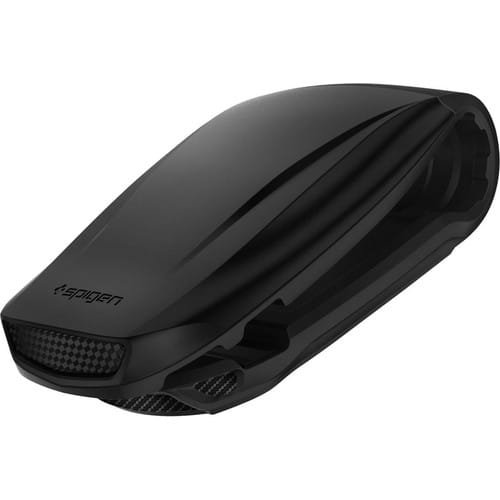One of the most popular dog breeds in the world, the Pomeranian is an elegant, cute and small dog with a typically friendly (sometimes bossy) temperament. Also called "Pom", this breed is fiercely loyal to its loved ones and can be an effective guard dog despite its diminutive appearance.
With proper training the Pomeranian can be an excellent companion, but this dog is not suitable for everyone. Families with small children may not be the ideal home for a Pom, but the breed usually gets along well with older, calmer children. If you're looking for a loyal, affectionate and lovable little dog, a Pom may be the right choice for you.

Pomeranian Overview
The group to which it belongs: Ornamental dog (also called toy dog breeds)
Length - size: 15 to 18 cm
Weight - Kg: 1.5 to 3.5 kg
Hair - fur structure and color: A long, dense coat that can come in many colors, the most common being orange, cream, sable, black, brown and white.
Life expectancy: 12 to 16 years
Pomeranian General Characteristics
| Level of affection | High |
| Sincerity | Middle |
| Child friendly | Low |
| Animal friendly | Low |
| Exercise - Movement Needs | Low |
| Acting | Middle |
| Energy level | Middle |
| Trainability | Middle |
| Intelligence | High |
| Barking tendency | High |
| Amount of moult | High |

History of the Pomeranian
The Pomeranian is descended from the sled dogs of Iceland and Lapland and is the smallest member of the Spitz dog family. It inherited its tail, which is curled over the back, from its relatives, the Malamute and Samyed breeds. The breed is named after the place where it was bred Pomerania known as Germany and Poland. At that time, the Pomeranian was much larger in size than it is today.
In the late 1800s, Queen Victoria of England is known to have owned a Pomeranian and allowed the breed to be shown in a conformation show. After this event, the popularity of the small but brave dogs grew from strength to strength. It was also during this period that various efforts were made to breed the Pom breed in a smaller size, and the dogs began to be bred in smaller sizes.
The Pomeranian gained popularity all over the world in the early 20th century. This popularity continues to this day. The Pom was officially recognized by the American Kennel Club in 1888 and became one of the dog breeds. Two of the three dogs that survived the sinking of the Titanic in 1912 were Pomeranians. Both were rescued by lifeboats with their owners Margaret Hays and Elizabeth Barrett Rothschild.

Pomeranian Care
Pomeranian care: The breed has a long, thick and dense coat that requires routine grooming. You should brush your Pom's coat several times a week. Some Pom owners prefer to have their dog's coat periodically washed and trimmed by a groomer to reduce the need for routine brushing. You should also keep your dog's nails trimmed regularly.
Otherwise, your dog may exhibit undesirable behaviors such as raking, scratching and scraping, especially on hard surfaces. Poms can have dental problems, so it is best to brush the dog's teeth daily. Due to the Pom's nature, which can sometimes be very touchy, adequate training and socialization is very important.
Don't be fooled by their elegant appearance; in the worst case, these cute little dogs can be stubborn and aggressive. This is a common trait in many small dog breeds. However, Poms are smart dogs that respond quickly to training. If trained properly, they will be happier and more harmonious in the long run.
Poms also have a medium-high energy level, so routine exercise is recommended. You can try daily walks and frequent playtime. Poms should also have the chance to run around occasionally. Fortunately, they don't need much space to do this. The Pomeranian has a sturdy body fat and can walk more than 5 miles without you having to carry it on your lap.

Poms don't realize that they are small, so they can fearlessly challenge larger dogs. Good leash training and management is therefore very important. Due to their small size, a Pom can be injured in the hands of an unconscious child. Therefore, Poms may not be suitable for a family with young children until the children are old enough to learn to handle the dogs carefully.
Pom dogs can live harmoniously in a multi-pet household with cats and other small dogs. However, they would not be suitable for a household with larger dogs. This is because a Pom won't hold back in a fight with a larger dog and can be injured even in rough play.
While poms feel better in cool weather, they can overheat in hot weather. Although they are suitable for apartment living, their tendency to bark should also be taken into consideration. Because sometimes they can make too much noise. They are excellent guard dogs as they can warn their owners of any approaching danger. But for a small dog, they can make a lot of noise and cause disturbance.
Common Health Problems
Poms can develop some inherited health problems. The most common of these are listed below:
- Patella luxation (dislocation of the kneecap)
- Tracheal collapse
- Progressive Retinal Atrophy (PRA)

Nutrition
The little Pomeranian needs a small amount of food. Two meals a day with 1/4 cup of dry dog food is enough for him. However, your dog's needs may vary depending on its size, activity level and other factors. Try to closely monitor your dog's weight to minimize the risk of obesity.
Conclusion
If you're thinking of adopting a Pomeranian, pay attention to these: Pom is a very cute, energetic and loyal dog that can live in small spaces and is suitable for apartments. However, it can sometimes be overly noisy and bark loudly despite its small size.
This can cause problems for you and your neighbors. However, Pom is not recommended for families with small children. Because they are likely to get injured in the hands of children. Also, in terms of price, the Pomeranian is one of the most expensive dog breeds in the world.
Our titles that may interest you:
4 Important Things to Know Before Adopting a Dog!



